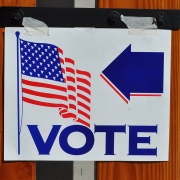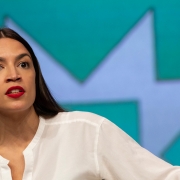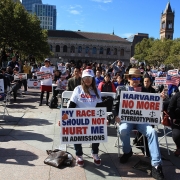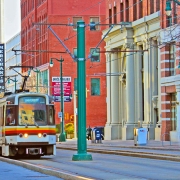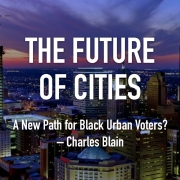After Intersectionalism
The divisive racial ideology that dominated American politics for the past decade is dying. Led by minority activists and white progressives, “woke” ideology promoted a Manichean struggle between a coalition of the BIPOC, an acronym for “Black, Indigenous, and people of color” (assumed to be natural allies) against what the BIPOC Project calls a hegemonic system of “white supremacy, patriarchy and capitalism.” But this vision of Black and white racial conflict, while still influential in universities and elite institutions, keeps getting rejected by American voters—as happened in political referendums on issues like policing and immigration, and most recently in the triumph of “normies” and centrists in the midterm elections.
Does this mean that Americans should expect a new era of kumbaya racial harmony? Not likely. Rather, the future may look more like the past, as America reverts to an older style of ethnic politics in which ideology takes a back seat to practical concerns and different groups compete over resources like jobs and the spoils of government spending.
A recent example: Last month, LA’s Latina City Council president, Nury Martinez, was caught on a leaked audio recording making racist comments about Black people, Jews, and Armenians. Martinez, who has since resigned, described a white council colleague’s adopted Black son as a “parece changuito” or “like a monkey.” The recording, which was anonymously leaked online shortly before an election, had captured a private conversation between Martinez and other powerful Latino Democrats in LA that took place in the headquarters of a powerful labor group, and centered on how to shore up their power.
In trying to fortify her own ethnic bloc, Martinez saw Black voters, as well as Armenians and Jews, as potential threats. She grouses about “judios” who “cut their deal with south LA”—the complaint being that LA’s Jewish officials have aligned themselves with Black politicians (an alliance that helped Tom Bradley become the city’s first Black mayor in the early 1970s) to the detriment of the Latino political bloc. Martinez had previously complained that her district, an area long populated by Jews but becoming increasingly Latino, was misrepresented by “the Katzes of the world, the Bermans of the world. I never saw them in the community or at the grocery store with us. I just saw them on TV.” Following the classic pattern of urban American ethnic political jostling, Martinez’s rant was largely about traditional issues of redistricting and the awarding of valuable money-generating assets to Latino, as opposed to African American or Anglo, districts.
This jostling reflects the shifting ethnic makeup of LA, where Latinos now constitute nearly half of the population while the share of Black Angelinos has dropped to less than 9%. That is part of a longer term trend: “Between the 1980 and 1990 censuses,” notes a New York Times article from 1995, “the Black population of Los Angeles County dropped to 11% from 13% of the population, while the Hispanic and Asian populations swelled.” The article pointed to the South Central area of LA as an exception that was still “predominantly Black,” but even that has changed. 80% African American in 1970, South Central LA is now two-thirds Latino. There are more taco stands than barbeque joints, the vibe more East LA than old South Central.
Rather than a united uprising of “people of color,” what happened in Los Angeles—and what will happen soon across the country—was a conflict caused by the complex and shifting landscape of ethnic politics in America.
The future may look more like the past, ideology taking a back seat to practical concerns.
Ethnic political conflict is nothing new in the United States. Coming from distinct backgrounds and enjoying different levels of success, ethnic groups have always competed for political influence. In the late 19th century, Boston’s James Michael Curley waged a successful campaign that allowed the Irish to supplant the city’s Anglo elite. In New York City, William R. Grace became New York’s first Irish Catholic mayor in 1880, beating mainstream Protestants opposed to both his ethnicity and faith. In melting pot meccas like New York and Chicago, Jews, Italians, and other minorities struggled for dominance, either through Tammany Hall or the Daley machine, both long dominated by Irish political bosses. Describing the New York City of his upbringing, Gen. Colin Powell recalled that it was not sharply divided along Black and white Lines, but rather was “a mélange of numerous often competing” ethnic communities.
Read the rest of this piece at Tablet.
Joel Kotkin is the author of The Coming of Neo-Feudalism: A Warning to the Global Middle Class. He is the Roger Hobbs Presidential Fellow in Urban Futures at Chapman University and Executive Director for Urban Reform Institute. Learn more at joelkotkin.com and follow him on Twitter @joelkotkin.
Photo: Los Angeles Fire Department via Flickr CC 2.0 License.


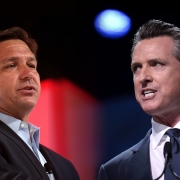 Gage Skidmore, used under CC 2.0 License
Gage Skidmore, used under CC 2.0 License